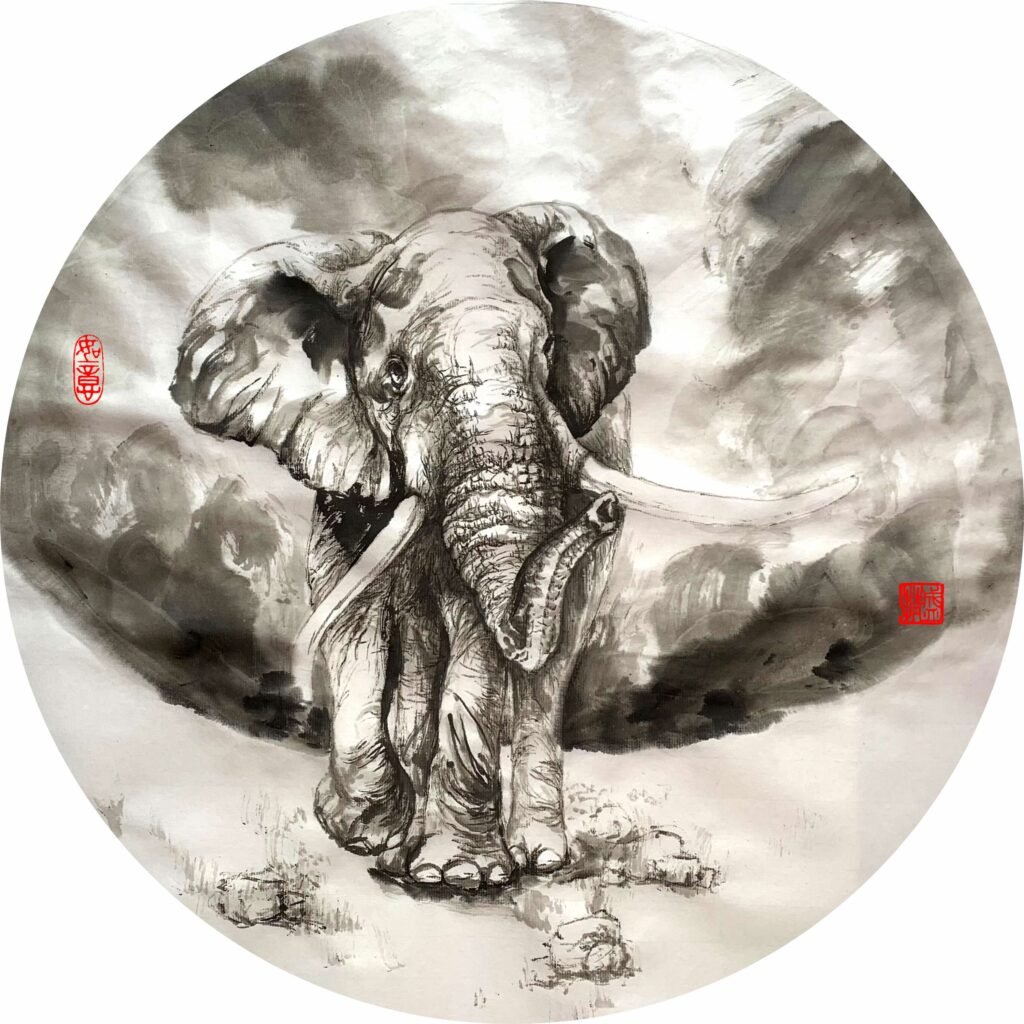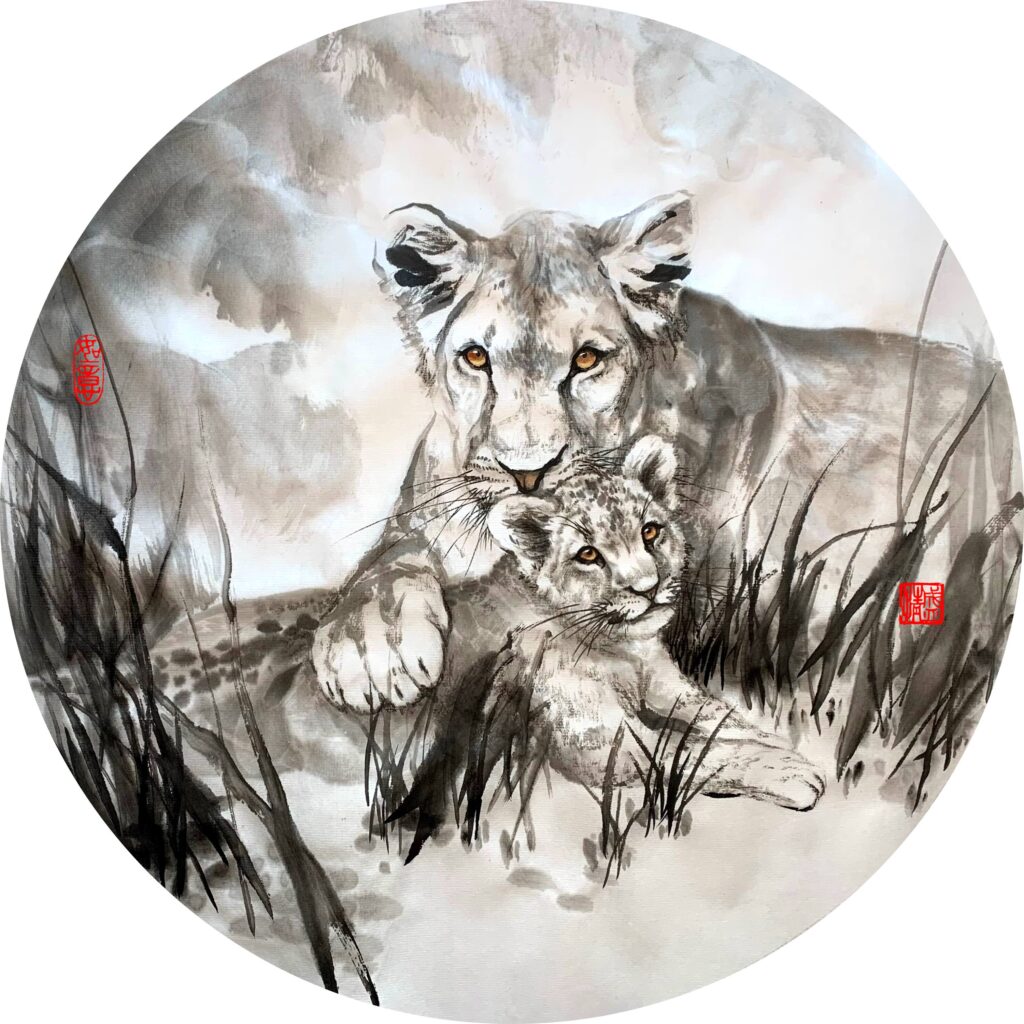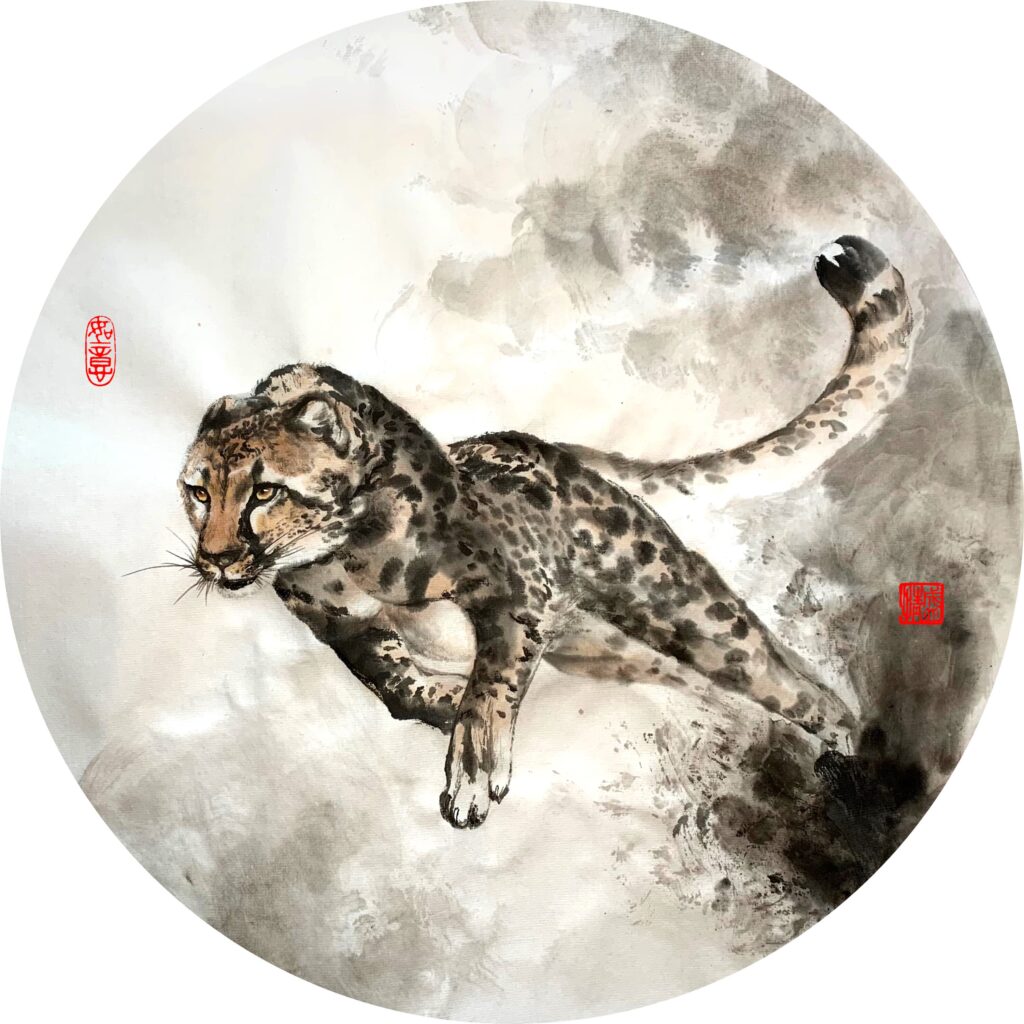Have you also considered certainty in our universe that is filled with randomness? Ok, let us narrow it down, what about the development of the Chinese painting or the so called Sumi-e painting? What would happen if the universe took a different turn concerning the oriental art? I suppose there is at least one scenario, issuing from the rock painting.
The rock painting means exactly as it sounds, and it was born in the pre-historical times when ancient ancestors of ours painted animals, figures and tools on the surface of caves. It experienced a glorious development during the Sui and Tang Dynasty (6th Century), and the evidences are clearly visible today, such as in the Dunhuang frescoes (see the gorgeous example blow), dating back as far as the year 336. Located in the western side of China, along the silk road, these paintings contained the wisdom of many ancient civilizations. This was also the type of painting that went all the way to Japan, deeply influencing its artistic taste. In China however, the rock painting encountered an overwhelming crush from the later water-ink painting and the literati-scholar art, and the techniques of rock painting were almost completely lost in the course of history. In Japan however, after its initial introduction in the 6th Century, it reached a peak during the 9th Century, manifesting into a rather Japanese style of painting, which led to the Yamato-e. Unfortunately in China, it was rarely seen anymore until recent years.


The truth is, the usaeg of color of this ancient painting style still lives on in our so called “traditional Chinese Painting”, especially in the Gongbi style. The Gongbi painting also requires color pigments that are rock based. In the rock painting the majority of colors used came from minerals, and some others are chemically made. Some of the particularly beautiful colors such as Azurite (石青), Malachite Green (石绿), Orpiment (雌黄), Cinnabar (朱砂), Ocher (赭石) are still in our daily painting use, where the traditional craftsmen of the high-quality painting colors continued using traditional ways to refine these colors.
However these rock colors could not be mixed to create a new color due to the large grains, even the very fine modern versions. Also, the rock painting color pigments are not transparent, and the less fine pigments would create rough textures on the surface of the artwork, deeming it not desirable in the Gongbi painting, which strives for silk like smoothness.

So what would happen if the rock painting continued to influence the Chinese painting without interruption? I imagine the oriental painting materials would be completely different from today. Suppose the mineral paints could be refined at will, the surfaces used to paint on (paper or silk) may not exactly complement the purpose. Delicate paper or silk would be wasted to bear the thick layers of color above it, whereas thicker and less fine surfaces may fit better. The content of the painting may not change but the scale may. The Gongbi art is usually small with great details, thanks to the fine surface and the fine color; art such as Thangka would demand a much larger scale. Perhaps the painting brushes need changing as well, the delicate animals hairs may not be able to sustain the overwhelming rock paints, so perhaps the synthetic hair brushes or even tough hair brushes would be more popular. Also the plant based painting colors may never be developed, simply because these colors will not last as permanently as the mineral colors. Last but not least, ink may never be developed, and therefore, no ink stones.
I think I will be sad to not having silk like papers and silk to paint, not being able to paint in a smaller scale, and not to have the plant based color variations to use. In addition to all the above, I would miss the simplicity of painting using only ink. So in summary, continuing on this path may lead to the disappearance of all the treasures of the scholar’s chamber that we all love (brush, ink, paper, and ink stone), wow, I would be really sad.

History cannot be assumed, but after this thought experiment I do appreciate the various branches of the oriental art more. I love the fact that the ancient rock painting is not the dominate artistic expression any longer, but we are fortunate enough to still be able to enjoy this ancient art style and be able to paint in that way. What do you think?
Our Courses
-
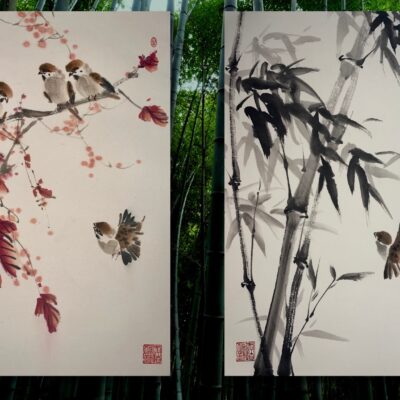 Bamboo & Sparrow Painting Course
Bamboo & Sparrow Painting Course -
 Cat Painting Course
Cat Painting Course -
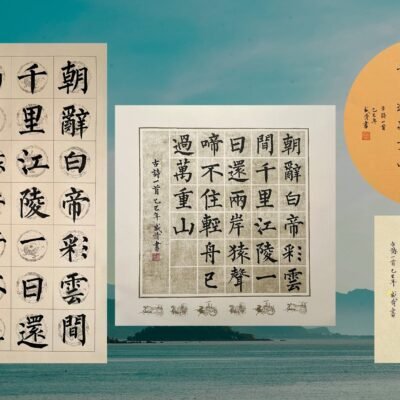 Chinese Calligraphy Regular Script Masterclass
Chinese Calligraphy Regular Script Masterclass -
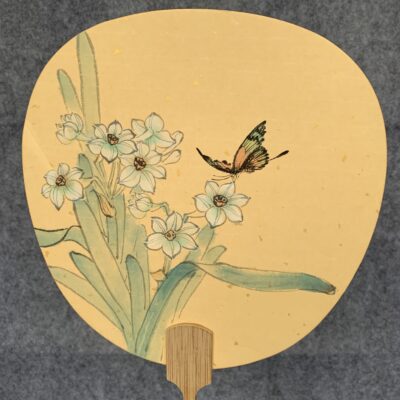 Daffodil & Butterfly Fan Painting Course
Daffodil & Butterfly Fan Painting Course -
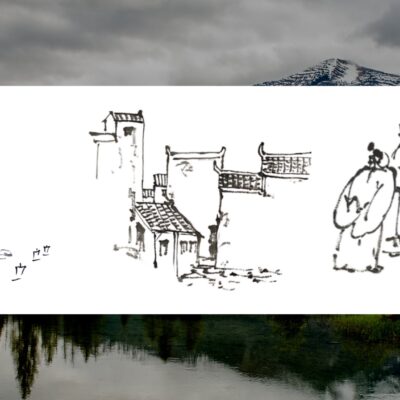 Landscape Scenery Painting Course
Landscape Scenery Painting Course -
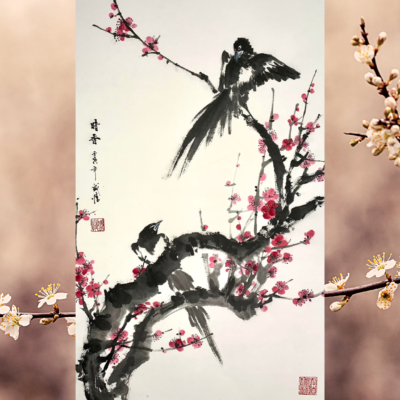 Magpie & Plum Blossom Freehand Painting
Magpie & Plum Blossom Freehand Painting -
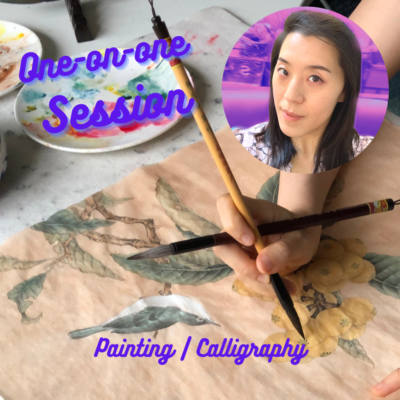 One-on-one Sessions
One-on-one Sessions -
 Panda Ninja Ink Art Club
Panda Ninja Ink Art Club -
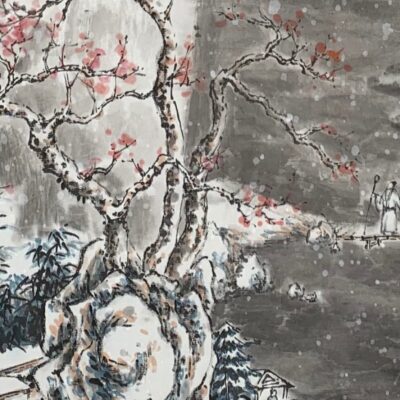 Snow Landscape Painting Course
Snow Landscape Painting Course -
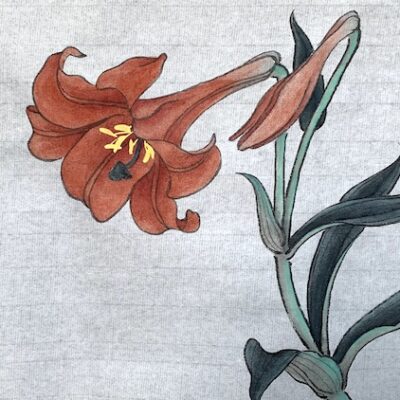 Gonngbi Painting (1) – Introduction & Lily Flower
Gonngbi Painting (1) – Introduction & Lily Flower -
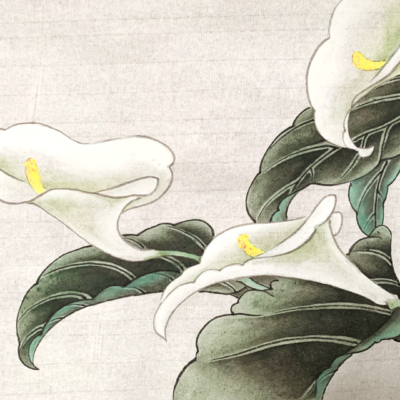 Gongbi Painting (2) – Calla Lily
Gongbi Painting (2) – Calla Lily -
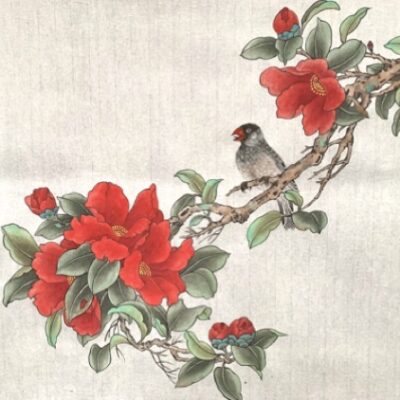 Gongbi Painting (5) – Camellia Flower & Bird
Gongbi Painting (5) – Camellia Flower & Bird -
 Fish Painting Course
Fish Painting Course -
 Grapes and Bees Painting Course
Grapes and Bees Painting Course -
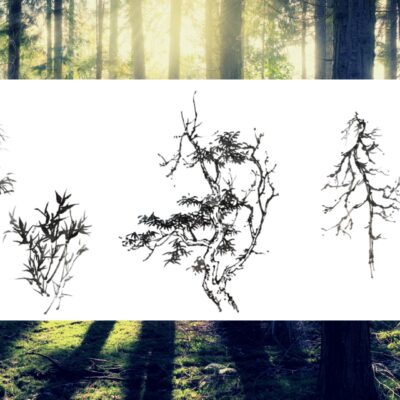 Landscape Tree Painting Course
Landscape Tree Painting Course -
 Chicken Painting Course
Chicken Painting Course
Buy Artworks | Learn Brush Painting | Learn Chinese Calligraphy
